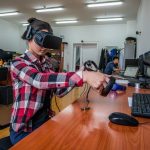MANILA, PHILIPPINES (3 April 2020)— Fostering greater innovation would bring faster and more inclusive economic growth in Asia and the Pacific, according to the theme chapter of the Asian Development Outlook (ADO) 2020 released by the Asian Development Bank (ADB) today.
“Developing Asia invests 2.1% of its gross domestic product in research and development, but there are wide variations across countries,” said ADB Chief Economist Yasuyuki Sawada. “The five key drivers of innovation are sound education systems, innovative entrepreneurship, conducive institutions, deeper capital markets, and dynamic cities which bring together research universities and forward-thinking firms.”
Over the last five decades, Asia and the Pacific has become a major global innovation and knowledge hub, with the region’s share of global research and development investment rising to 40% in 2017 from 22% in 1966. The region is also home to many of the world’s most innovative economies, including the People’s Republic of China (PRC), Japan, the Republic of Korea, and Singapore. Overall, however, innovation in the rest of the region still lags that in advanced economies, the report says.
The report shows that countries that innovate more tend to have faster economic growth. Middle-income economies in Asia and the Pacific that have graduated to high income such as the Republic of Korea increased spending on innovation, which is vital for productivity growth. Investment in research and development in these economies are three times bigger than in their peers. In addition, innovations contribute to more inclusive and environmentally sustainable growth in the region. Tuk-tuks and jeepneys powered by electricity or liquefied petroleum gas/compressed natural gas are examples.
Sustained innovation requires an educated and skilled work force. Basic education systems need to provide a mix of hard and soft skills that combine the likes of science, technology, engineering, and mathematics with learning to promote critical thinking, problem solving, and creativity. On-the-job training is important too. Firms that trained their employees were more likely to innovate than firms that did not by as much as over 12 percentage points, according to ADB’s report.
Innovative entrepreneurs and small firms can be supported through conducive institutions, including stronger property rights, competition policies, rule of law, and good information and communications technology. Access to capital markets, notably equity markets, are key to financing innovation. Governments can play a major role in financing research and development.
The report concludes that there are no shortcuts to achieving innovative societies in the region. Building them is a long-term commitment requiring a lot of hard work.







